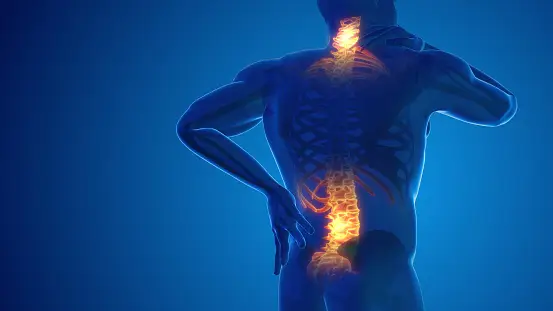Most car crash victims survive even though they may sustain minor injuries or sometimes major injuries. It is not uncommon for a victim to seem unhurt, only for them to later discover they had sustained an internal injury from the automobile accident. Thousands of people actually get internal injuries every single day from different types of accidents, especially collisions. This is why getting medical treatment immediately if you have symptoms is important.
What are some of the most common types of internal injuries sustained in car accidents? What should you know about internal bleeding and which steps should you take to avoid becoming the next statistic? Better yet, how can a personal injury lawyer help you and why should you pick a reputed firm to represent your case? At Flora Templeton Stuart Accident Injury Lawyers we refer to you excellent physicians if you are injured when you call us.
What’s An Internal Injury?
An internal injury can simply be defined as an injury sustained on an internal part(s) of the body. In most collisions and other types of accidents, the injury tends to affect one or more organs of the cranial, thoracic, or abdominal cavities.
Some of the most commonly experienced internal injuries, especially from road accidents, affect internal organs in the head region, chest region, or abdominal region. Also, internal injuries are often accompanied by internal bleeding, which some also consider as part and parcel of internal injury.
What are some of the most common internal injuries faced by vehicle accident victims?
Common Internal Injuries from Accidents
A severe car accident can leave the victim with numerous possible types of injuries, and these will usually vary widely, depending on the circumstances and conditions in which the crash happened. While topical or obviously detectable injuries are more common, the chances of getting an internal injury from a high-impact accident are also high. What’s more, they come in many different forms, including the following:
Traumatic brain injury:
The brain is by far among the most delicate organs in the human body, making it quite vulnerable as far as internal injuries due to accidents are concerned. As a matter of fact, car accidents are considered the 2nd leading cause of TBI, accounting for at least 17% of cases each year.
Often caused by high-impact blows to the head, traumatic brain injury or TBI was a common cause of death according to the CDC in 2019, where more than 61000 Americans died from TBI-related injuries. Internal injuries in the head often result in bleeding in the brain, which prevents oxygen from reaching the areas where it is critically needed, thus causing brain damage.
Rib injuries:
The rib cage is another highly susceptible area to sustaining injuries after a car crash. If they’re not fractured or broken, they could be bruised or the soft tissues may suffer minor injuries. Rib and torso injuries usually occur when an individual suffers blunt force trauma to the chest area.
The injuries may be caused by a range of hazards within the vehicle, including the dashboard, steering wheel, the seats, or seat belts. At times, this could be accompanied by pneumothorax, a condition where a fractured rib punctured one of the lungs to cause deflation and collapse.
Organ contusions:
A range of internal organs may sustain injuries during a car crash. Some of these may include the liver, kidneys, spleen, lungs, and even the stomach. Sometimes life-threatening organ contusions simply refer to bruise injuries that cause blood vessel damage and eventually interfere with the overall function of the affected organ.
Including those that affect the muscles, bones, and eyes, contusions often require hospitalization, and the treatment costs can be quite high depending on the severity of the injuries.
What You Should Know About Internal Bleeding
Internal bleeding typically occurs as a result of injury to internal organs, where blood vessels are involved. This is to say that it can occur anywhere in the body, especially the abdominal, thoracic, and chest cavities, as well as the head. There are also many different types of internal bleeding as seen below:
Common types of internal bleeding from accidents:
- Abdominal aorta aneurysm – Where the abdominal aorta raptures due to stomach compression during the accident
- Hematoma – bleeding under the skin Pulmonary Blood clots (in the lungs)
- Pericardial Tamponade
- Intracranial bleeding – bleeding in the brain
Signs of internal injury/bleeding:
Although they can sometimes go for days unnoticed, traumatic internal injuries and internal bleeding after a car accident may have a range of detectable signs and symptoms. These may range from pain to lightheadedness, confusion, slurred speech, pale skin, fatigue, and even extreme thirst. Nausea, bruising, and shock are also common.
It can be extremely difficult to tell for sure which part of the body was affected unless the accident victim seeks immediate medical attention. When seeking personal injury compensation from an at-fault motorist, the doctor’s report will actually come in handy as evidence, whether or not your case goes to trial.
Causes of internal injury/bleeding
After getting involved in a car accident, a lot of things can cause internal bleeding or injuries. More often than not, trauma is the major cause, but this also comes in various forms. These include:
- Blunt trauma – a part of the body collides with a blunt obstacle during the auto accident. This causes tearing of the vessels, causing bleeding from inside.
- Decelerating trauma – often impacts the brain, lungs, and even the heart. It’s a common cause of TBIs.
- Penetrating trauma – occurs when deep puncture wounds or lacerations are involved. An object might have penetrated and injured an internal organ.
What to Do Following a Road Accident
The moments following a car crash can be quite confusing, especially if you’re the victim. However, knowing what to do when you or a friend is involved in one can be the difference between life and death.
It could also have an impact on whether or not the negligent/at-faulty driver is held responsible and you are compensated for the damages or losses suffered as a result of the accident. Here’s a quick checklist of things to do after getting involved in an auto collision.
- Get to safety and stay calm
- Check for injuries on yourself and other passengers if possible
- Call emergency services/911
- Collect information at the scene if you can – (photos, plate numbers, insurance details, name and contacts of the other drivers and witnesses)
- Seek medical attention after you are hurt. Do not hesitate to go by ambulance
- Let your auto insurer know
- Call an experienced auto accident/personal injury attorney
How a Personal Injury Attorney Can Help
Internal injuries can be life-threatening if not fatal. Some of them are also extremely costly to treat if at all the damages are reversible. The good thing is that the law is clear about one thing. If you or someone close to you encountered an accident and sustained internal injuries, you may be entitled to monetary compensation.
The personal injury attorneys at Flora Templeton Stuart Accident Injury Lawyers can help you receive the compensation you so much deserve to recover damages like:
- Medical and treatment costs
- Lost earnings
- Ongoing care
- Permanent injuries
- Pain and suffering
- Emotional distress
Call Flora Templeton Stuart Accident Injury Lawyers if you have been injured in a car or truck accident.
If you have been injured in an accident, call us 24/7 at 888-782-9090 or contact us online to get a free case evaluation from one of our top attorneys. If you cannot come to use, we will travel to you.

